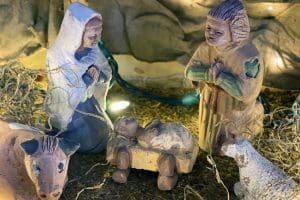Why did Jacob Share the Allegory of the Olive Tree?
FEATURES
- The Book of Mormon Includes These Doctrines That the Bible Leaves Out by Richard D. Gardner
- Conspiracy Theories: Why They Captivate Us and How They Divide Us by Steve Densley, Jr.
- ‘Surviving Mormonism’ and it’s just … a church member showing up with cookies by Deseret News
- VIDEO: The Miraculous Preparation of Dallin H. Oaks by Meridian Magazine
- You Mormons Are Ignoramuses: Appreciating the Doctrine of the Spirit World by H. Craig Petersen
- Jesus Didn’t Have an Office by Lynne Perry Christofferson
- The Halloween Scare by Daris Howard
- Church Announces the Addition of 55 New Missions in 2026 by Meridian Church Newswire
- Come Follow Me for Sunday School: “A House unto My Name”, Doctrine and Covenants 124 by McKay Christensen
- New Nutrition Company ‘Shakes’ Up Weight-Loss Industry with These 3 Simple Tips (Sponsored by HLTH Code) by Meridian Magazine
















Comments | Return to Story
Michael FryeMarch 30, 2016
Most of the people living during Jacob's time likely had no knowledge or experience with olive horticulture. Olive trees are not native to the Americas, and it is believed they were first brought to the Americas by Spanish colonists in the 16th century. IF THIS IS CORRECT, how could Jacob expect his people to understand Zenos' allegory of olive trees about which they had no knowledge or experience? Respectfully, a Sunday school gospel doctrine teacher.
ADD A COMMENT